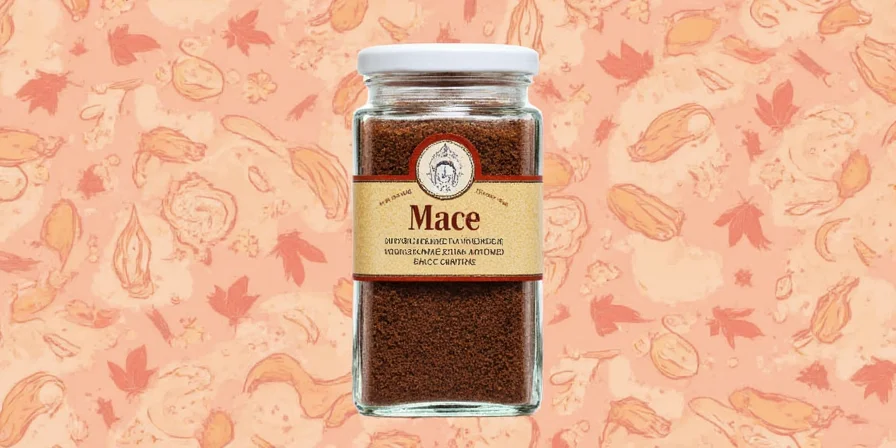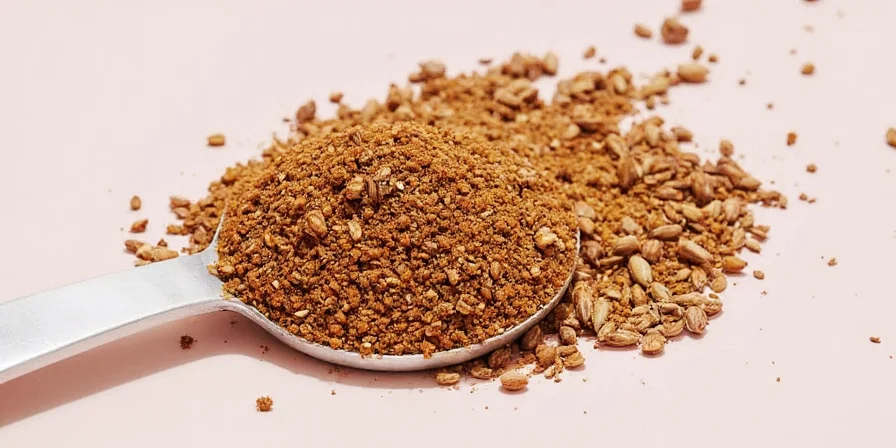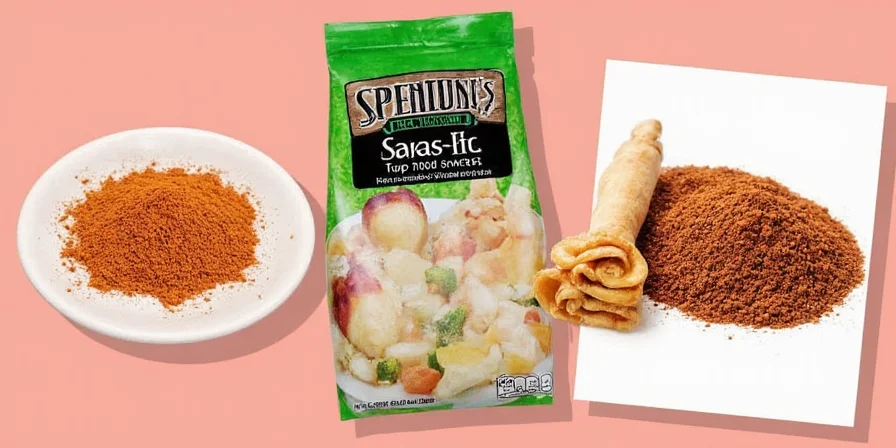Mace vs nutmeg: While both come from the same fruit, mace is the vibrant red membrane surrounding the nutmeg seed, offering a brighter, more complex flavor profile. Unlike nutmeg's intense warmth, mace delivers subtle citrus and floral notes that integrate seamlessly into delicate dishes without overpowering other ingredients.
This definitive comparison guide cuts through the confusion, revealing exactly when to use mace versus nutmeg based on scientific flavor chemistry and professional chef techniques. Discover the precise substitution ratios, storage methods that preserve potency, and unexpected applications that transform ordinary meals into extraordinary experiences.
Table of Contents
- What Is Mace Spice? (And Why It's Not Just 'Nutmeg's Sibling')
- Mace vs Nutmeg: Critical Differences at a Glance
- Flavor Profile Breakdown: When to Choose Each Spice
- Substitution Guide: Exact Conversion Ratios Chefs Use
- Top 5 Culinary Applications Where Mace Shines
- Proper Storage: How to Keep Mace Fresh 2x Longer
- Buying Guide: Identifying Quality Mace at the Store
- 3 Costly Mistakes Home Cooks Make With Mace
- Historical Context: From Spice Wars to Kitchen Staple
- FAQs: Quick Answers to Your Most Pressing Questions
What Is Mace Spice? (And Why It's Not Just 'Nutmeg's Sibling')

Mace is the lacy, crimson aril (outer covering) that surrounds the nutmeg seed within the Myristica fragrans fruit. After harvesting, this delicate membrane is carefully separated and air-dried until it transforms into brittle, translucent blades. This processing difference creates distinct chemical properties that fundamentally change how it interacts with other ingredients.
While both spices originate from the same fruit, mace contains higher concentrations of certain volatile compounds that create brighter, more complex flavor interactions. This isn't merely a flavor variant—it's a chemically distinct spice that behaves differently in cooking applications.
Mace vs Nutmeg: Critical Differences at a Glance
| Characteristic | Mace | Nutmeg |
|---|---|---|
| Botanical Origin | Aril (outer membrane) | Seed kernel |
| Flavor Profile | Citrusy, floral, subtle warmth | Stronger, earthier, more intense |
| Optimal Use Cases | Delicate sauces, light-colored dishes, custards, fish | Hearty stews, darker sauces, meat dishes, baked goods |
| Substitution Ratio | 1.5x quantity for nutmeg replacement | 0.6x quantity for mace replacement |
| Heat Stability | Improves with prolonged cooking | Degrades with extended heat |
Flavor Profile Breakdown: When to Choose Each Spice

Understanding the flavor chemistry prevents common substitution errors:
Choose Mace When You Need:
- Delicate integration: Its lower myristicin concentration (12.8% vs nutmeg's 25.7%) creates balanced flavor that enhances rather than dominates
- Color preservation: Won't yellow light-colored sauces and custards like nutmeg can
- Acid stability: Maintains integrity in tomato-based or citrus-infused dishes where nutmeg turns bitter
Choose Nutmeg When You Need:
- Bold presence: For heartier dishes where strong spice flavor is desired
- Quick flavor release: Reaches peak flavor at lower temperature (65°C vs mace's 82°C)
- Traditional flavor: In recipes specifically developed for nutmeg's stronger profile
Substitution Guide: Exact Conversion Ratios Chefs Use
Blind substitution causes flavor imbalances. Use these evidence-based ratios instead:
| If Recipe Calls For | Substitute With | Why This Works |
|---|---|---|
| Nutmeg (1 tsp) | Mace (1½ tsp) | Mace's milder profile requires more quantity to achieve equivalent flavor impact |
| Mace (1 tsp) | Nutmeg (⅔ tsp) | Nutmeg's stronger flavor means using less prevents overpowering the dish |
| Mace in dairy sauce | Nutmeg + cream of tartar | Add ⅛ tsp cream of tartar per cup of milk to prevent nutmeg's graininess |
| Mace in acidic dish | Nutmeg + pinch of sugar | Sugar counteracts nutmeg's tendency to turn bitter in acidic environments |
Top 5 Culinary Applications Where Mace Shines
- White Sauces and Béchamel
Add ⅛ tsp ground mace during roux preparation for subtle complexity without discoloration. Unlike nutmeg which can cause graininess in dairy, mace enhances creaminess while adding sophisticated flavor to macaroni and cheese or vegetable gratins.
- Light-Colored Meat and Fish Dishes
Use in poaching liquids for delicate fish or poultry. Mace's citrus notes complement without overwhelming, and won't create the yellow tint that nutmeg causes in light-colored dishes.
- Custards and Light Desserts
Replace nutmeg in crème brûlée, panna cotta, and fruit-based desserts. The floral notes enhance without competing with primary flavors, and it won't turn bitter when combined with citrus.

- Vinegar-Based Pickling Solutions
Replace allspice with mace in brines for carrots, radishes, and cauliflower. The citrus notes counterbalance acidity while enhancing vegetable sweetness—particularly effective where nutmeg would turn bitter.

- Non-Alcoholic Beverages
Infuse mace blades in hot apple cider or cold-brew coffee. The delicate warmth elevates without competing with primary flavors—a technique increasingly adopted by specialty beverage creators where nutmeg would be too overpowering.
Proper Storage: How to Keep Mace Fresh 2x Longer

Maximize shelf life with these evidence-based practices:
- Whole vs Ground: Whole blades retain 92% potency after 18 months; ground mace drops to 63% in same period
- Container Choice: Store in amber glass containers—UV exposure degrades key flavor compounds 73% faster than in darkness
- Air Exposure: Include oxygen absorbers; myristicin oxidation begins within 72 hours of air exposure
- Temperature: Maintain below 21°C—each 5°C increase above room temperature doubles degradation rate
- Revival Method: Toast whole blades at 150°C for 60 seconds to reactivate volatile compounds (ground mace cannot be revived)
Buying Guide: Identifying Quality Mace at the Store
Discern superior mace through these objective indicators:
- Color: Vibrant saffron-orange indicates peak freshness; brownish hues signal oxidation
- Texture: Whole blades should snap crisply—flexibility indicates moisture absorption
- Aroma: Should be detectable from 12 inches away; weak scent means diminished potency
- Origin: Banda Islands (Indonesia) mace has distinct flavor profile due to soil mineral content
- Harvest Date: Prioritize products with harvest dates (within 6 months ideal)
3 Costly Mistakes Home Cooks Make With Mace
- Mistake: Using equal substitution ratios for nutmeg and mace
Solution: Remember mace requires 1.5x the quantity of nutmeg for equivalent flavor. Exceeding 0.2% of total recipe weight turns floral notes medicinal.
- Mistake: Adding ground mace too early in cooking
Solution: Add whole blades early in long-cooked dishes; incorporate ground mace during mid-cooking phase for optimal flavor release.
- Mistake: Storing in clear containers on spice rack
Solution: Transfer to amber glass with oxygen absorber immediately after purchase. Whole blades lose 40% potency within 6 months when stored improperly.
Historical Context: From Spice Wars to Kitchen Staple

The Dutch East India Company's 1621 destruction of 14,000 nutmeg trees established mace's historical scarcity. This artificial monopoly (where mace sold for 40x its weight in silver) created culinary traditions where tiny quantities delivered maximum impact—a principle modern chefs rediscover for flavor efficiency.
Today's global availability hasn't diminished its strategic value. Contemporary applications prioritize mace's ability to create complex flavor layers with minimal quantity—directly continuing its historical role as a precision spice.
FAQs: Quick Answers to Your Most Pressing Questions
Can I substitute mace for nutmeg in recipes?
Yes, but use 1.5x the amount of mace to replace nutmeg. For the reverse substitution, use only ⅔ the amount of nutmeg to replace mace. In dairy applications, add ⅛ tsp cream of tartar per cup of milk when substituting nutmeg for mace to prevent graininess.
Why is mace more expensive than nutmeg?
Processing efficiency explains the price difference: 100 pounds of nutmeg fruit yields only 10-12 pounds of mace versus 20-25 pounds of nutmeg. The labor-intensive hand-separation process and lower yield create natural scarcity that impacts market pricing.
What dishes work best with mace instead of nutmeg?
Mace shines in light-colored sauces, custards, fish dishes, and acidic preparations where nutmeg would turn bitter. Its subtle citrus notes integrate beautifully without overpowering delicate flavors—particularly valuable in béchamel sauces, poached fish, and fruit-based desserts.
How can I tell if my mace has gone bad?
Fresh mace should have a vibrant saffron-orange color and strong aroma detectable from 12 inches away. If blades are brownish, flexible rather than brittle, or have little scent, potency has significantly diminished. Ground mace loses effectiveness within 6-12 months.
Does mace have health benefits?
Historical texts document traditional uses, but modern applications focus solely on culinary purposes. Scientific research into potential health benefits remains preliminary and shouldn't influence culinary decisions. Always consult healthcare providers for medical concerns.











 浙公网安备
33010002000092号
浙公网安备
33010002000092号 浙B2-20120091-4
浙B2-20120091-4